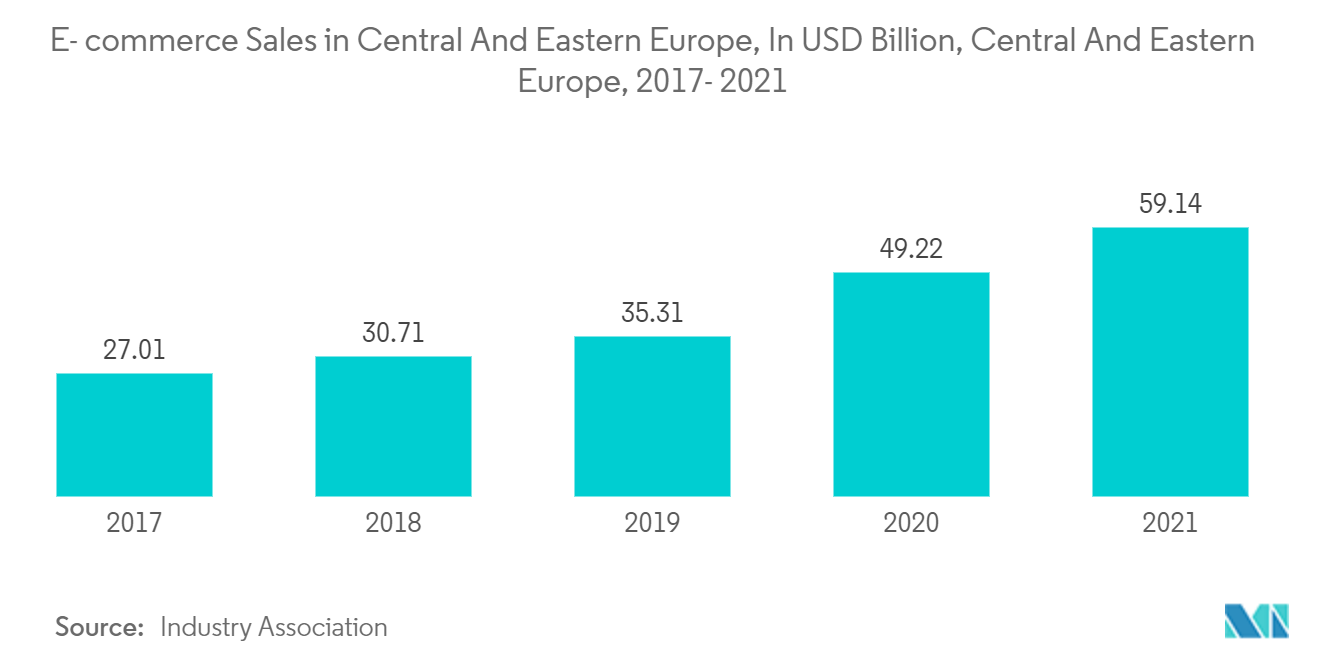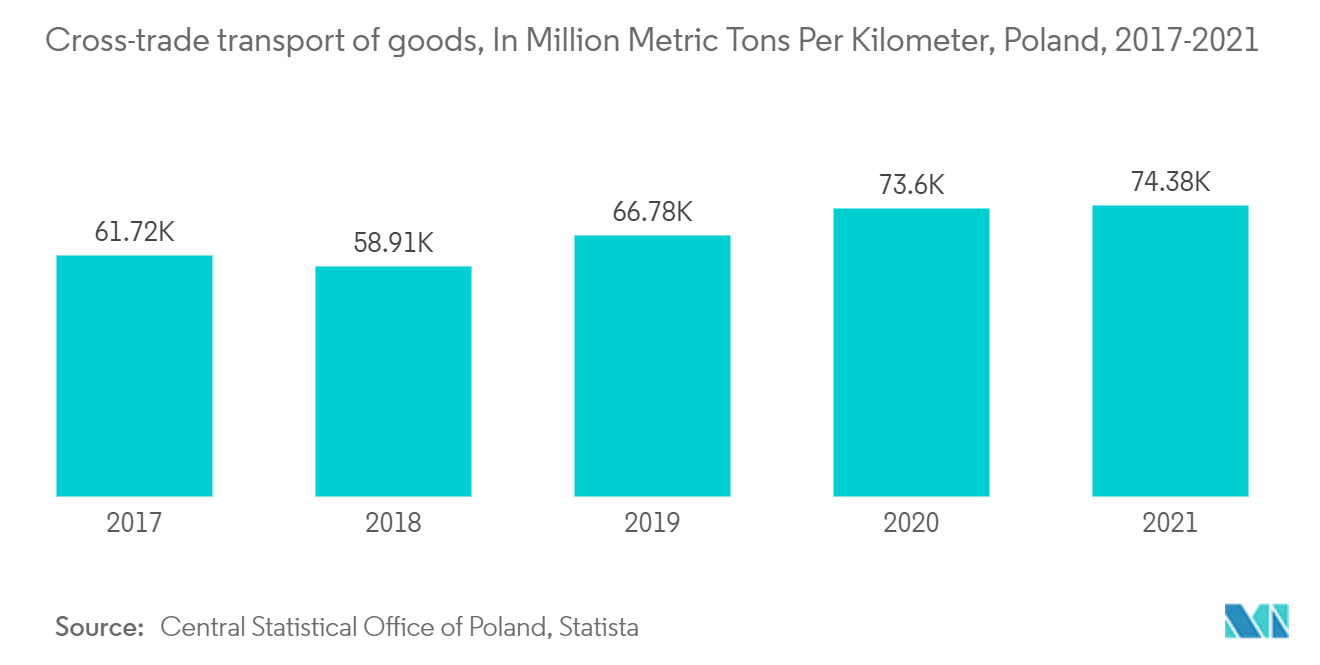Market Trends of Europe Freight and Logistics Industry
This section covers the major market trends shaping the Europe Freight & Logistics Market according to our research experts:
Growing E-commerce Propels Demand for the Logistics Industry
- The logistics sector is driven by the growing demand for logistics services, which is generated by the boom and evolution of e-commerce. Contrary to the basic assumption, Central and Eastern Europe (CEE) has seen robust growth in the industry and continues to dominate the European economy.
- The evolving e-commerce has put pressure on sales channels for faster delivery and an optimum supply chain. This scenario brings opportunities for third-party logistics and warehousing services. In the past, real estate and production were the factors driving CEE.
- Currently, e-commerce is in the same position, both in domestic, as well as foreign markets. Poland and the Czech Republic mainly export to the west. If firms cannot be located in the United Kingdom, they need to be on the continent.
- CEE is currently preferred over its western counterparts. The e-commerce market in this region may be lagging behind other more mature European markets, but it is on its way to catching up over the next few years.
- Consumers are creating a rapidly growing demand for a multi-channel market for both products and services. Retailers, especially in the online food industry, are looking toward innovative e-logistics to help them grow in the future.
- TuSimple, a global self-driving technology company, has announced a partnership with Hegelmann Group, a leading European transportation and logistics provider with over 5,000 vehicles in operation.

Poland is the Largest Logistics Market in the Central and Eastern European Region
- The Polish logistics market, the largest market in the Central and Eastern European region, has grown notably since the opening of its national borders. Poland is among the fastest-growing logistics markets in Europe due to its strong value proposition, proximity to Western Europe, and extensive transportation infrastructure.
- The logistics market has been developing at a double-digit pace for several years. Historically, the majority of warehouse space was located in the Warsaw area. However, regional markets have been growing more dynamically and account for over two-thirds of the current market.
- With around 12 million sq. m of modern logistics space across Poland, the majority of supply is concentrated in the five most-developed markets. Big-box logistics projects are generally located along motorways and exit roads outside of the administrative borders of the largest Polish cities, but there are also multiple projects within city borders, often for smaller occupiers, such as small business units (SBUs).
- With the ever-increasing cross-border trade, the country is also looking into the modernization of border infrastructure with the cooperation of the neighboring countries, as this is vital and supplements the growth of cross-border trade.
- Located at a strategic geographical location connecting Western Europe with Russia and China, the cross trade (international road transport between two different countries performed by a road motor vehicle registered in a third country) through the country is also very high.


